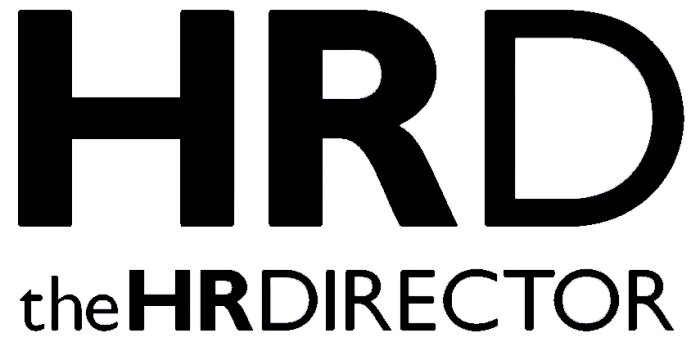For most learning and development (L&D) leaders, the challenge isn’t in convincing people that learning matters – it’s in proving that it does. Learning has long been associated with positive business outcomes: better performance, higher engagement, and improved retention. But in the absence of meaningful metrics, these benefits can be difficult to quantify, leaving L&D stuck in a loop of well-intentioned programmes and vague reporting. While marketing, finance, and operations can point to KPIs with clear links to growth, L&D often has to justify its role with softer signals such as surveys, satisfaction scores, completion rates. Does learning lack impact, or does it just lack evidence?
That gap between intention and insight has never been more problematic than it is now. In a year marked by rapid technological change, business model disruption, and tightening budgets, the margin for ambiguity is shrinking fast. Executives are looking for reassurance that L&D is “working”, but they also want proof that it’s accelerating capability, enabling adaptability, and directly contributing to business performance. And they want it in numbers, not narratives. For L&D teams, this is a moment of reckoning: either evolve how success is measured, or risk being deprioritised in strategic conversations. To do that, a new metric is emerging that goes beyond participation and perception to capture what really matters: how fast people learn what the business needs them to know.
This challenge took center stage in a recent webinar that brought together three leading voices in the learning space: Josh Bersin, Global Industry Analyst and Founder of The Josh Bersin Company; Andy Lancaster, Chief Learning Officer at Reimagine People Development; and Arnaud Blachon, CEO and Co-Founder of Rise Up.
The panel unpacked a growing concern: L&D professionals are being asked to deliver measurable business impact but it is near impossible to show direct correlation between learning and business outcomes, even with the most in-depth reporting frameworks. The conversation explored why “time-to-skill” – the speed at which employees move from skill gap to proficiency – is emerging as a more accurate and actionable way to track ROI. Along the way, the speakers tackled the structural, cultural, and technological challenges facing L&D leaders today, from the limitations of traditional training models to the rise of AI-driven personalisation. What emerged was a clear consensus: it’s time to rethink not just how we train people, but how we demonstrate its worth..
Rethinking ROI: It’s not just about money
Return on investment has long been a sticking point for L&D leaders. It’s an elusive target that’s often reduced to financial metrics alone. But as Josh Bersin pointed out, that approach is no longer fit for purpose. “The idea was the ultimate way to measure the effectiveness of a training investment is to do an ROI study,” he explained. “But when you actually look at the ROI of training, there’s all sorts of intangible benefits that don’t quantify well: employee engagement, retention, customer empathy, innovation, agility. Those are hard things to measure in an ROI project.” The true impact of learning is often seen in outcomes that don’t neatly fit into a spreadsheet. When learning is working, the business feels it. But when ROI is measured too narrowly, those signals get lost.
Andy Lancaster took the point further, urging L&D leaders to reframe the conversation entirely. “We get pushed into compliance and quick fixes if we only focus on financial outcomes,” he said. Instead, Lancaster advocates for a dual approach: pair data with human stories. “Marketeers use narratives all the time,” he noted. “I saw one organisation create a wonderful e-book of manager stories from a development programme, and the CEO handed me a copy and said, ‘Look at these.’ That is impact.” He also emphasised the importance of time: “Learning is a longer-term deal. We need to revisit outcomes after three, six, even twelve months. It doesn’t happen overnight.”
It’s this thinking that underpins Rise Up’s proposed metric of time-to-skill. As Rise Up CEO Arnaud Blachon explained, “Time-to-skill is the time it takes to close a specific skill gap, from identification to verified proficiency. It’s simple, actionable, and directly linked to business impact.” In a fast-moving environment, speed matters. It’s not enough to build skills; organisations need to build them quickly and at scale. Yet despite its relevance, this metric remains underused. A live poll found that only 3% of participants rely on time-to-skill to measure L&D success. The vast majority still default to satisfaction scores, completion rates, and other surface-level indicators – useful metrics that are easy to track but often disconnected from real-world outcomes.
Closing the gap between learning and impact
As organisations race to build capability in the face of disruption, the conversation is shifting from what skills employees need to how quickly they can acquire them. “In every one of the six industries we studied, the high-performing companies didn’t just have more advanced skills, they developed them faster,” said Josh Bersin. “It’s not just about what people know; it’s also about the velocity of learning.” In an environment where customer demands, technologies, and job roles are evolving rapidly, speed is no longer a nice-to-have; it’s a competitive advantage.
For Arnaud Blachon, that urgency underscores the need to integrate learning directly into business workflows. “Learning speed has to be business speed right now,” he said. “We need to upskill people faster, and we need to train them in ways that are relevant to the role, to the moment.” That means rethinking learning as a reactive process and embedding it into day-to-day performance. Blachon noted that time-to-skill offers a more realistic and measurable pathway: “As L&D, to solve company issues, we need to define what return on investment is and the first step is measuring how quickly we can close skill gaps.”
Andy Lancaster argued that delivering this kind of responsive learning depends on removing structural barriers and opening access. “We need to take everybody seriously as talent,” he said. “The organisations that are doing well are the ones making learning inclusive and fair, not choosing who gets development and who doesn’t.” Lancaster called for a move away from top-down, course-based models and toward experiences that are adaptive, human, and deeply embedded in the flow of work. “The sweet spot is between tech and the human element,” he added. “It’s not all about content. It’s about collaboration, connection, and empathy.”
The urgency behind these ideas was reflected again in the live poll results. When asked about their biggest L&D challenge, 38% of participants pointed to measuring the success of their strategy. Another 28% cited engaging learners and boosting participation, while securing investment came in at 19%. Surprisingly, only 14% selected aligning learning with business goals. That suggests that alignment may be the aspiration, but measurement and engagement remain the obstacles.
Scale and speed: The role of AI
For all the complexity facing L&D teams today, the panel agreed that AI is poised to solve many of the most persistent challenges, but only if it’s implemented correctly. “AI is a paradigm shift,” said Josh Bersin. “The old paradigm was publishing: build something and get people to consume it. The new paradigm is dynamic content generated by AI.” He described tools like ChatGPT not just as productivity aids, but as learning platforms in their own right. “Most people using it are trying to learn something – understand, explore, improve. That’s the core of learning,” he said. “AI is going to let us take content, context, and expertise and turn it into learning experiences that are tailored, immediate, and scalable.”
Bersin was unequivocal in his view: this is bigger than anything the industry has seen before. “AI is way bigger than e-learning was in the early 2000s,” he said. “It’s going to change the paradigm.” For L&D professionals, that means moving beyond legacy publishing models and rethinking how content is delivered. “If you can build content quickly, you can also iterate quickly,” he noted. “Sometimes speed is more important than quality, because if you wait too long, the problem might have changed.”
Arnaud Blachon echoed this sentiment, arguing that AI will fundamentally change the mechanics of training delivery. “We truly believe we can now achieve hyper-personalised learning paths at scale,” he said. “Everyone learns in a different way, and AI will allow us to tailor training to place, role, and knowledge gaps. It completely changes the game.” In fact, he believes AI will make traditional content creation tools obsolete: “AI will replace authoring tools. It will be connected directly to the knowledge base and deliver the content adapted to each person.”
For Andy Lancaster, one of the most powerful aspects of AI is its potential to democratise learning. “Often there are roles that are really low in terms of support, like frontline care workers,” he said. “But now they can access an AI bot that augments their practice and gives them just-in-time support.” He also spoke candidly about AI’s role in coaching and wellbeing. “The idea that everyone could have access to a coach through AI, that’s huge,” he said. “It might not be perfect, but it empowers people who’ve never had that kind of support before.” Whether it’s scaling personalisation, accelerating delivery, or improving access, the message from the panel was clear: AI isn’t just another tool in the L&D toolkit, it’s a transformative force, redefining what learning can look like across the organisation.
If L&D wants a seat at the table, it needs to speak the language of business. Time-to-skill offers more than just a metric; it’s a mindset shift that reframes learning as a catalyst for growth, not a cost to justify.







